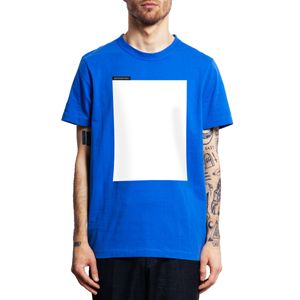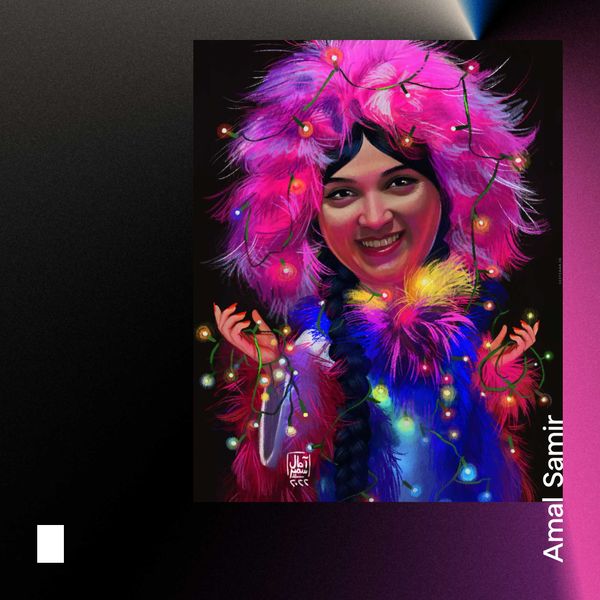What is pop art?
Pop art (short for popular art) is a movement in the visual arts of Western Europe and the United States of the mid-1950s and late 1960s, which arose as a reaction against the supremacy of the traditional “high art” of the past and highly personal abstract expressionism, which was only for the “elite”.
This style advocated the idea of appealing to reality – not to the artist's fantasy. Pop artists felt that what they were taught at art schools and what was on display in museums had nothing to do with their lives. Instead, they turned to contemporary mass culture for inspiration: advertising, product packaging, television, social stereotypes, idols, Hollywood movies, pop music, and comic books. Among the progenitors of pop art, there were often creators with professional backgrounds in these areas.
How did the pop art movement come about?
Pop art originated in the mid-1950s in Britain, London as a cluster of creative thinkers and practitioners set up the Independent Group (an association whose members explored the effect of technology, mass culture, and advertising on contemporary art), which included artists Richard Hamilton, Nigel Henderson, John McHale, Eduardo Paolozzi, architects Peter and Alison Smithson, James Stirling, and more. Their works had a strong influence on the subsequent development of the movement. In the late 1950s, pop art, a little bit different-shaped, spread to America and peaked in the 1960s. It should be noted that the fusion of fine arts and mass culture (such as billboards, packaging, and print ads), in some ways, started long before that period – about 100 years ago.
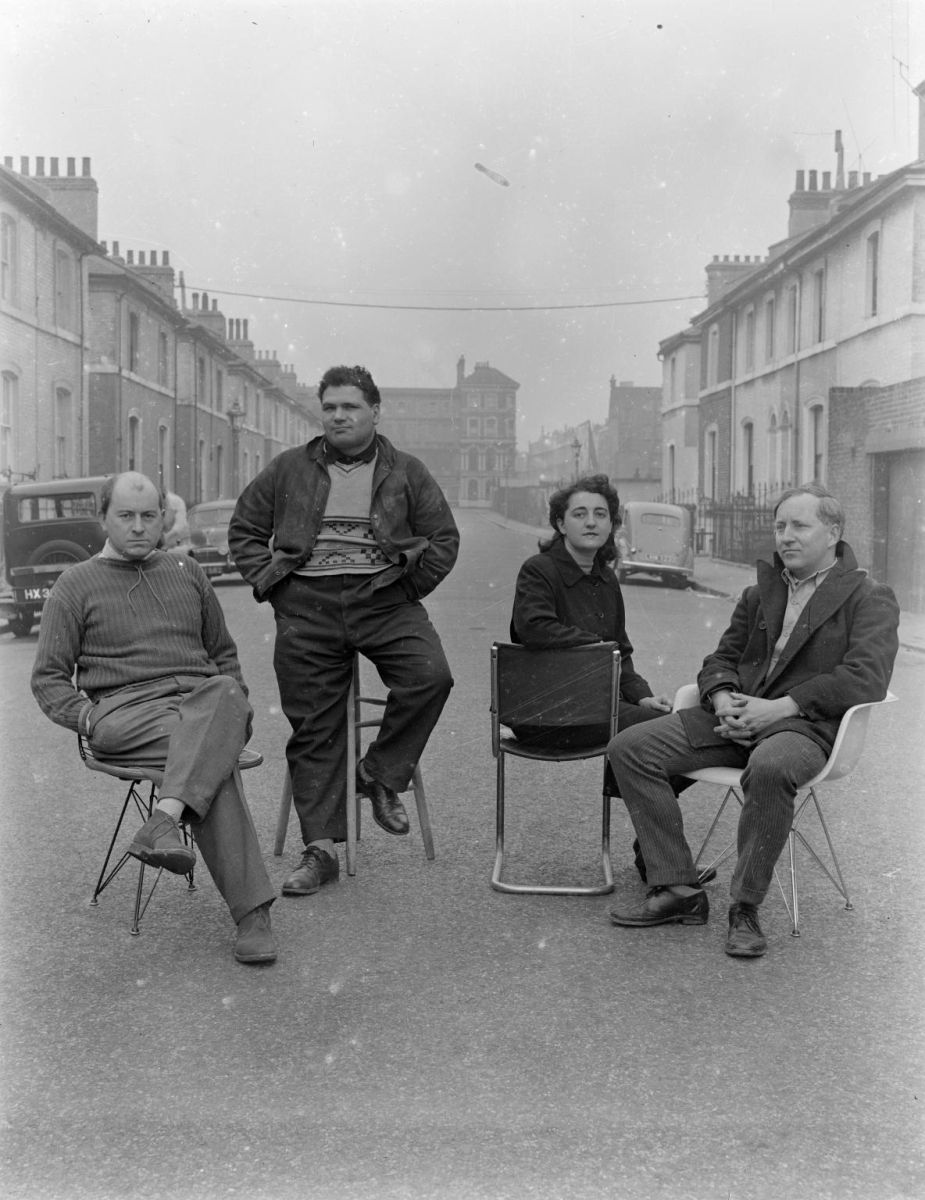
The active pop movement began during the cultural revolution of the mid-20th century. Following the post-World War II boom of economic and political growth, activists, thought leaders, and artists began pushing the boundaries of conformity to redefine everything from civil rights and women’s liberation to mass media and art itself. It was a challenge to tradition.
Although they were encouraged by similar subject matter, it’s important to clearly differentiate between British pop and American pop. Early pop art in Britain was heavily influenced from afar – in particular, by American popular culture, while the American artists were stimulated by what they saw and experienced within their own society.
In the United States, the pop style was a return to representational art, depicting the world in a recognizable way, with the use of impersonal, down-to-earth imagery. It tended to be emblematic, anonymous, and aggressive.
In the United Kingdom, the movement was more academic in its approach. By employing irony and parody, it centered on what the glossy American Dream represented and its ability to manipulate people’s lifestyles.
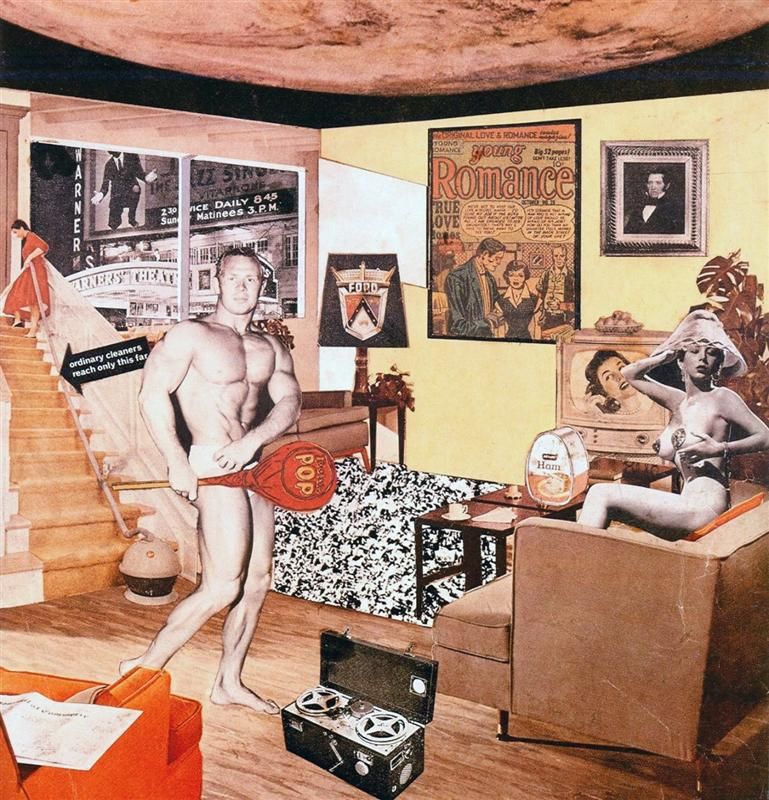
What features are common to pop art?
This art form is easily recognizable by its verve and unique artistic and conceptual attributes that artists previously tried to avoid in their work.
You can often identify pop art by:
- Bright, saturated and contrasting colors that don’t symbolize the artist’s inner world or personality as was often the case with previous, classical art forms but reflect the vibrant, well-liked mode of life around them.
- Very familiar objects from everyday life, as well as celebrities, comic book characters, famous brand logos that strengthen the idea that art can be inspired by anything and everything, not just history, mythology, or morality.
- Groundbreaking techniques (e.g. silk-screen printing, lithography), mixing of many atypical materials, and even satirizing objects by enlarging them to almost comical proportions.
- Absence of fictional storyline and deep meaning. Unusual and meaningless combinations of “found” or ready-made objects and imagery of popular, political or social phenomena are often demonstrated in collages, arranged in an artistic process called appropriation (copying, borrowing, or altering of images or objects from mass culture).
- Visual similarity to an advertisement, since the pop artists borrow design industry processes such as commercial screen printing and immensely graphic layouts mimicking the flyers, billboards, catalogs, and other marketing stuff like that, which is an integral part of the modern world.
Who are legendary pop artists?
The following figures are among those viewed as the original pop artists to shape the movement.
Richard Hamilton, a painter and collage artist, is commonly referred to as the founding father of British pop art for outlining the aims and ideas of the movement. He believed that art wasn’t just for galleries and exhibitions, but a way of life – thus he contributed to making art mainstream.
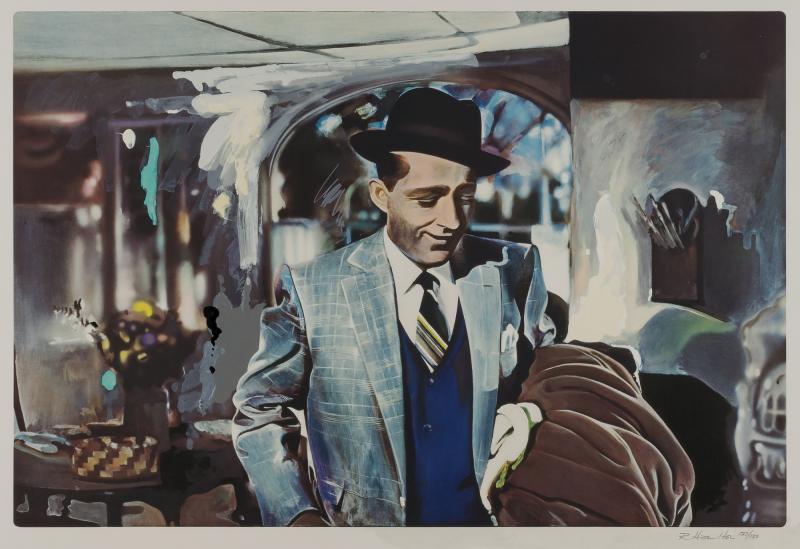
Andy Warhol, an American artist, film director, and producer, is arguably the most famous proponent of the style. Like many others, he started out in magazine illustrating and window-dressing. Later, Warhol used his celebrity status to spread pop art to other artistic fields: he is often considered the pioneer of independent film.
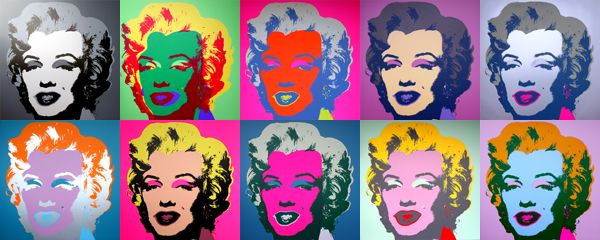
David Hockney is one of the most influential British artists of the 20th century. Working across diverse disciplines, including printmaking, photography, and stage design, Hockney is best known for his portraits and stunning depictions of the hot Los Angeles summers by the pool.
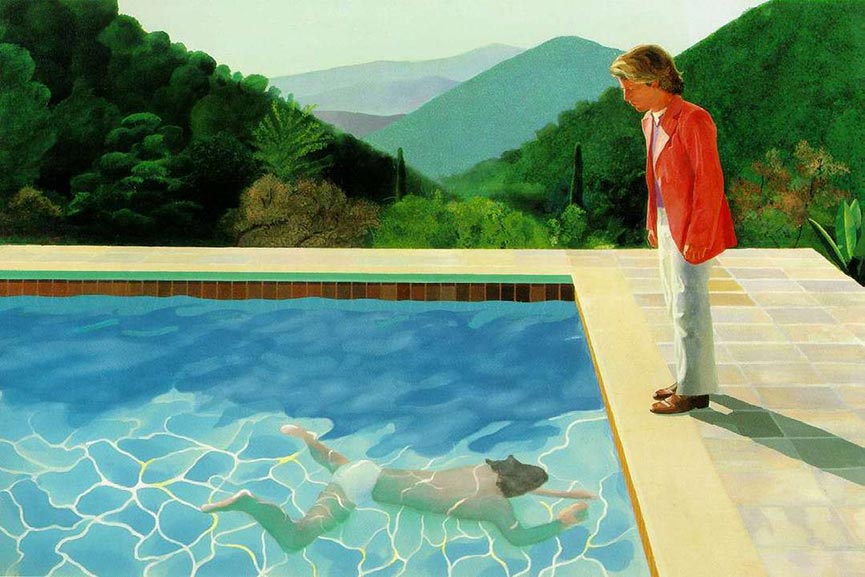
Roy Lichtenstein made comics the center of his creative activity and a piece of art as a whole. He did his first works using images from cartoons and comics, which he painted with oils and acrylics to imitate newspaper printing.

Jasper Johns was one of the pioneers of pop art in the 1950s. The world first learned about him thanks to his canvases depicting the American flag, as well as the graphics with targets and numbers. He also was involved in sculpture.
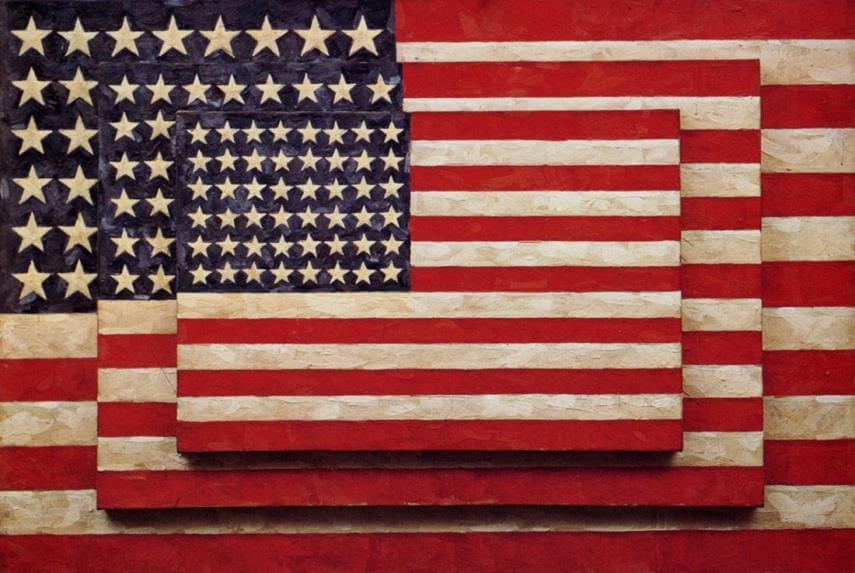
Wayne Thiebaud is an American painter most noted for his colorful still-life works of edible treats and everyday objects: cakes, pie slices, candy pieces, and the twisting streets of San Francisco.
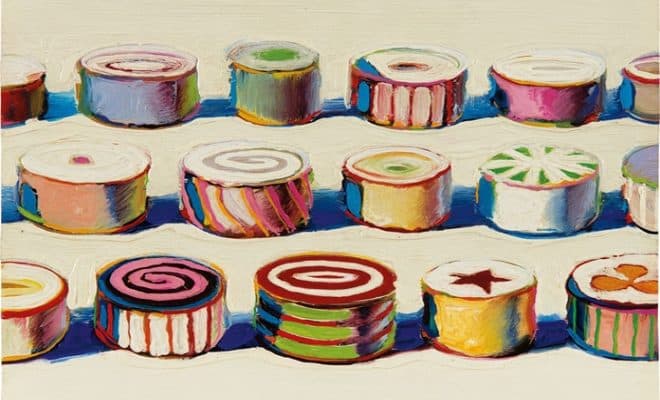
Many contemporary pop artists continue to keep the movement not just alive but thriving. Today, admired pop art performers include the likes of Jeff Koons, Alex Katz, Yayoi Kusama.
What is the key message of pop art?
One of the things that made pop art so remarkable was that the artists undermined the distinctions between “low” and “high” art by closing the gap between popular culture and classical art, thereby rethinking the conventional arguments on what constitutes art and what it generally means to be an artist.
Andy Warhol indicated that artists refused to notice all the great modern things that everyone else noticed, emphasizing the phenomenon that art at the time was totally disconnected from real life and real people; the obsession with the brushstroke had created an atmosphere of exclusivity.
But modernist critics were horrified by the pop artists’ use of such “low” subject matter and by their uncritical attitude towards it. They deemed pop art too primitive, inculcating vulgarity and kitsch, and were concerned that that might result in the emergence of a conformist, soulless society, which is not interested in anything but the daily consumption of goods and services.
Pop art representatives explained the essence of their movement by the thing that they didn’t want to idealize the mass culture, so they portrayed its objects the way they really are, focusing their art on what is absolutely familiar to every modern individual: movies, ads, television, consumer goods.
The pop art movement has proven to be valuable in making art accessible to the masses, not just to the elite. As the style drew inspiration from commercial figures and cultural moments, the work received recognition and respect from the general public. Finally, there was a kind of art seen as “art for the people”.
Gradually, the artworks of pop artists have influenced other creative industries: some of them are employed by designers in apparel production and interior decoration.
In fact, pop both took art into new areas of subject matter and initiated new ways of presenting it in art, and can be considered one of the first manifestations of postmodernism.
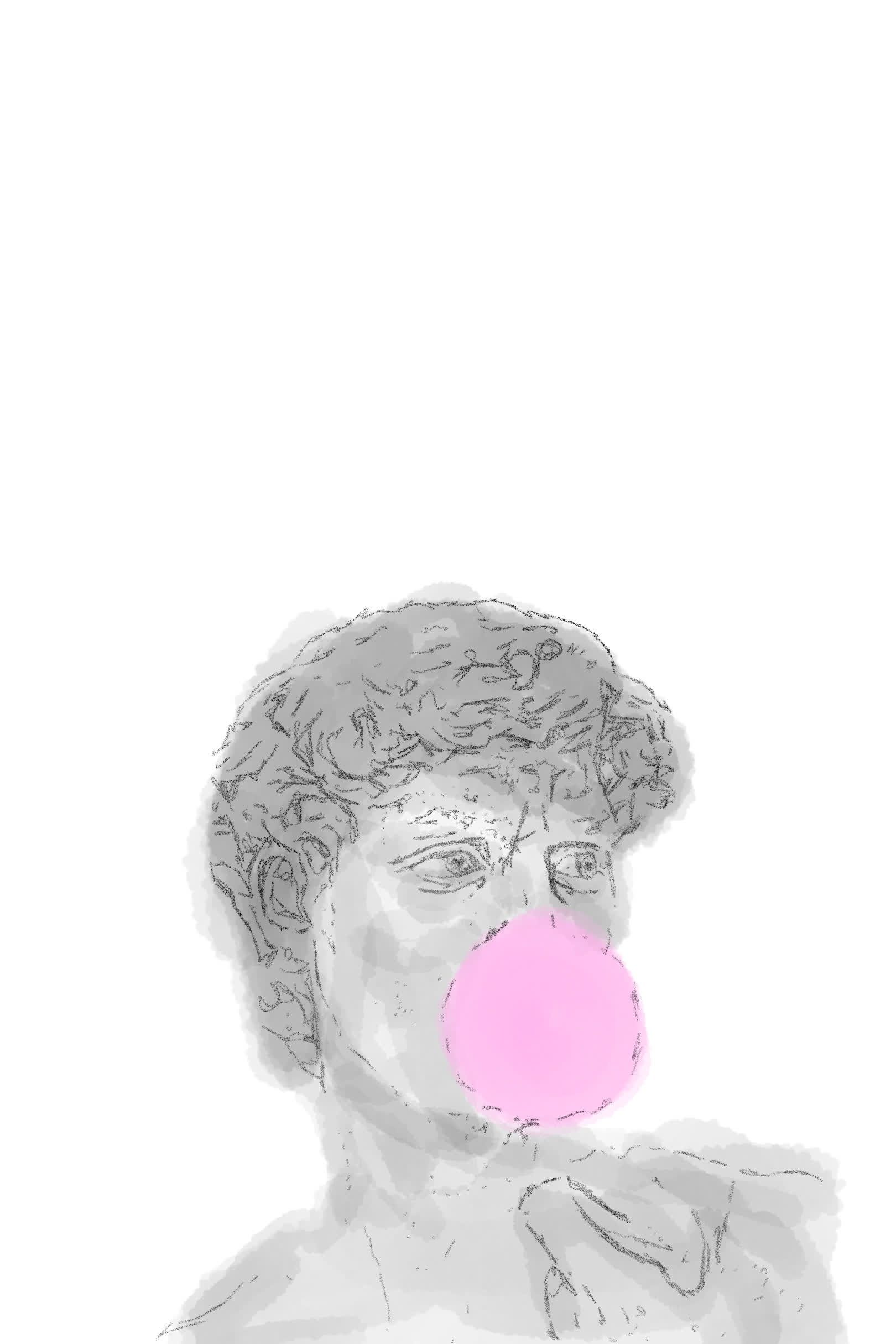
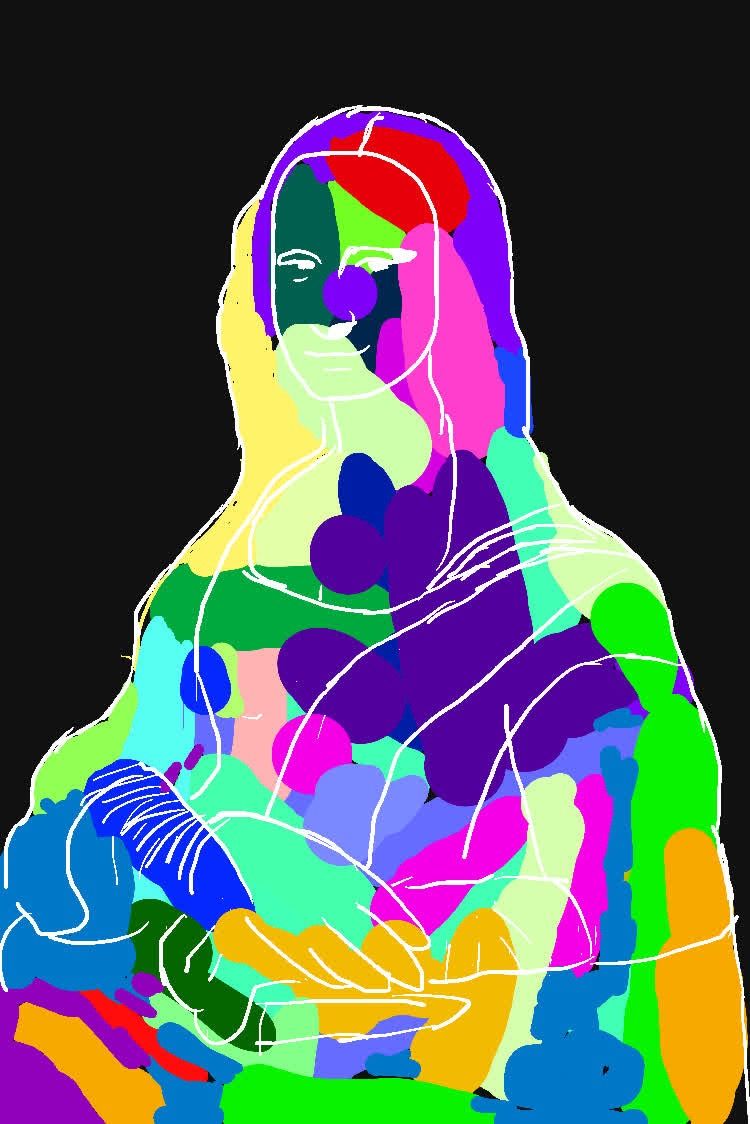

Download the Sketchar app on iOS and Android – create and share your work with the whole world!
The post cover uses Ira Paisley’s art made on Sketchar.




